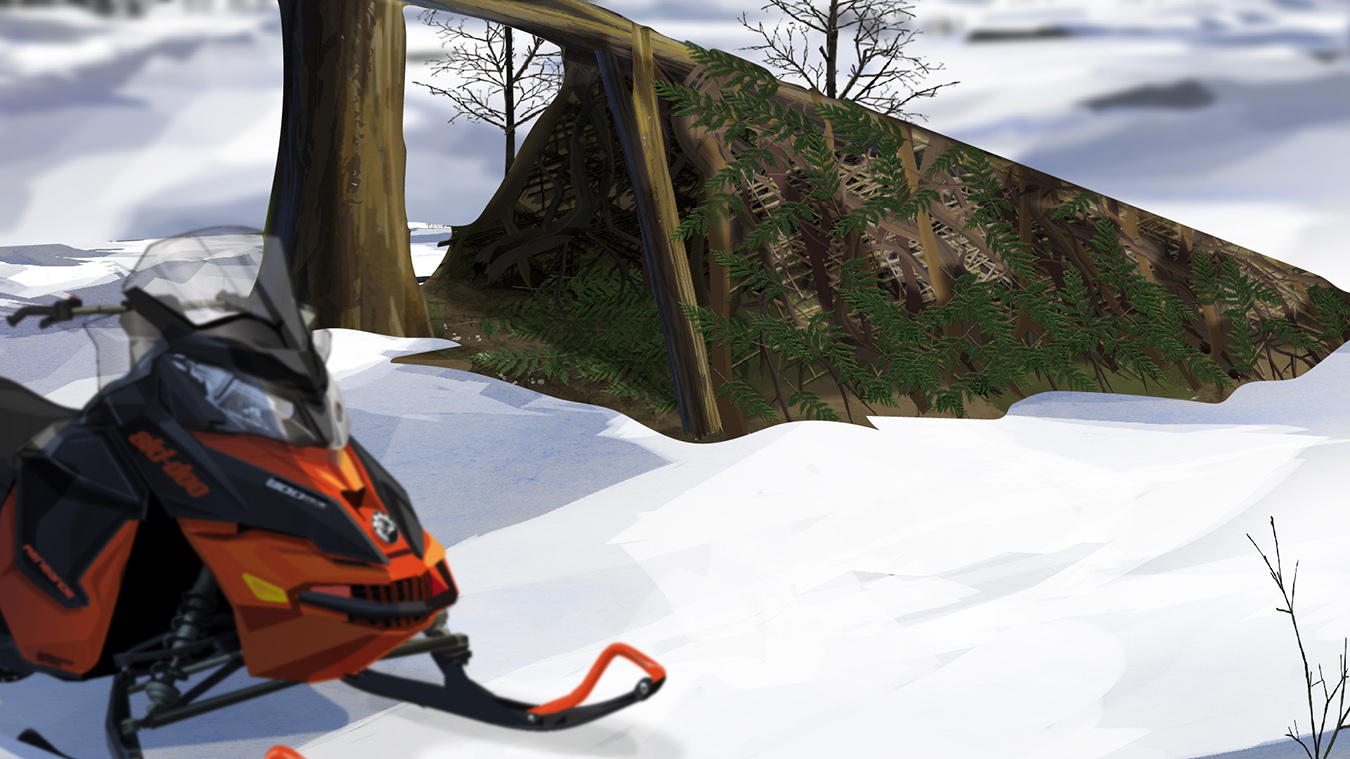SLEDsmart! USA Knowledge Base
Module 07 - Emergency Prep & Outdoor Survival
BUILDING A SHELTER

A partially fallen tree will be the quickest and easiest brush shelter foundation to work with—as long as the fallen tree is secure enough. Set up your shelter under the uplifted roots or under the leaning trunk. Use branches from other trees to thatch together the walls and roof. Have some brightly-colored tape? Tie it to the top so you’ll be seen when inside.
A lean-to can also be made easily enough using a large branch or log as a ridgepole. Look for a ‘Y’ or a fork in nearby trees or if the landscape is barren, place a tree pole upright and drive it into the ground to create a supportive beam for the shelter structure. Lean the branches against the supportive beam with their butt-end down and weave branches together to make walls for the shelter.
Here’s how you make your shelter as comfortable and as safe as possible:
- Cover the floor with soft tree branches to insulate your body against the cold ground. The thicker, the better.
- Set up your shelter so that the wind blows from behind it. This will prevent smoke and cold wind from blowing inside the shelter entrance.
- Use the garbage bag from your survival kit as a waterproof roof. Have a spare? Put it between your body and the ground to keep you dry.
- Build a fire in-between your shelter and a heat reflecting wall made of logs or stones. This will make the fire’s heat deflect off the wall and come back towards your shelter. Park your sled well away from the flames. Remember, there’s a tank of flammable gas in there.
BUILDING SNOW SHELTERS
If you’re in deep snow, find a sturdy pine or spruce tree (the cone-growing types of trees with needles) and remove any snow from around the base. The branches at snow level will form a natural roof and can be thatched together with other branches to create a full cover.
If there aren’t any trees around, build yourself a snow cave by digging a hole out of a snowdrift and carefully punching a couple of holes in the roof for ventilation. Try to arch the inside of the roof to keep the melting snow from dripping on you (like a makeshift igloo). Construct a sleeping ledge that’s slightly above the floor and cover it with any brush or shrubs that you can find nearby. Place a marker on the roof so that a search party will be able to spot you. Once you’re in, try to cover the entrance with something you have on-hand to prevent the wind and snow from blowing in.
RIDER SAFETY TIP: KEEP IT CLOSE
Careful when choosing your shelter location that you don’t wander too far away from where your broken-down sled is located. Rescue authorities will be looking for your brightly-colored sled, as it would be easier to spot than you would be. If it’s still running, try to park it near your shelter (but away from the fire) and in a spot where it would be within view of overhead search and rescue planes.



